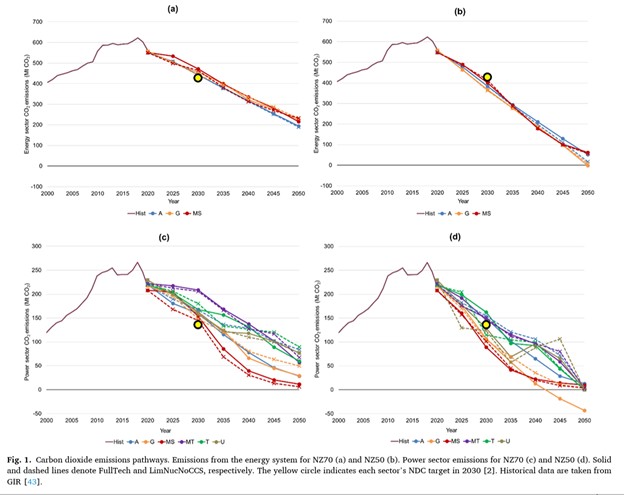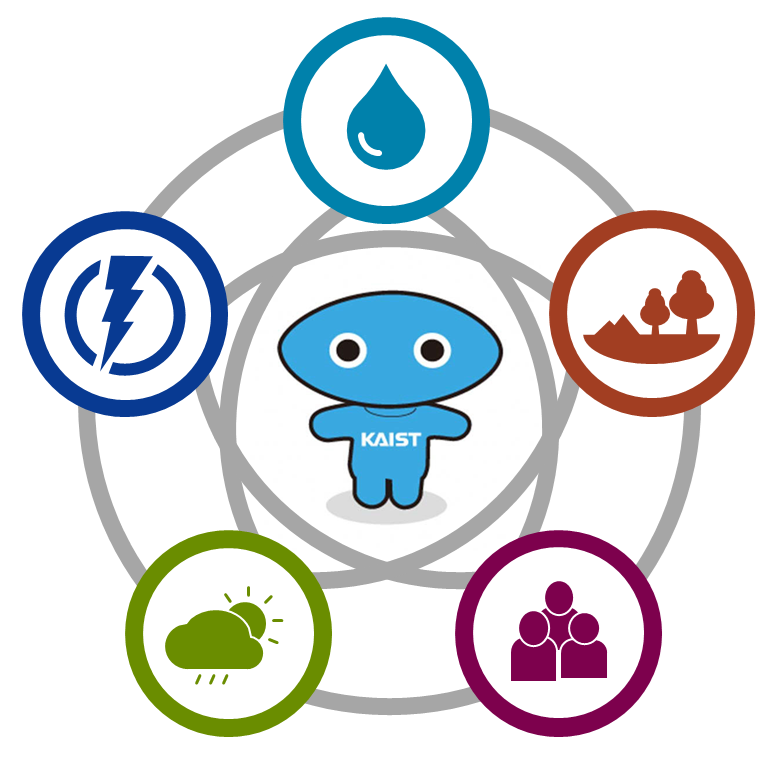Korea requires a substantial transformation of its power sector to achieve carbon neutrality by 2050. Analysis using six energy models reveals that rapid scaling of renewable energy in the power sector emerges as the core strategy, while nuclear power and carbon capture and storage (CCS) are also identified as crucial solutions to reduce reliance on variable renewable energy sources and mitigate associated costs.

In October 2021, Korea announced its mid-century climate target of achieving carbon neutrality by 2050, reaffirming its commitment by enhancing its 2030 Nationally Determined Contribution. This study, published in Energy and Climate Change, represents the first multi-model quantitative assessment of effective pathways and strategies for Korea’s power sector decarbonization, employing six energy-economic and integrated assessment models.
The research team analyzed eight scenarios combining alternative climate policy ambitions targeting carbon neutrality by 2050 and 2070, and technology availabilities of nuclear power and CCS. The findings underscore that the power sector plays a pivotal role with the greatest mitigation potential within the entire energy system, with a shift toward a renewable-dominated power sector emerging as the most robust strategy.
Specifically, the share of renewables and hydrogen in electricity generation must increase dramatically from 6% in 2020 to 53-77% by 2050, and further to 91-96% when nuclear power and CCS technologies are constrained. Solar and wind power capacity additions must accelerate by 3-12 times and 21-54 times their historical rates, respectively.
The transformation requires substantial financial commitments and carbon pricing. The current carbon price of $12 per ton of CO2 must rise to a median of $224 by 2050, while annual investment in power capacity is projected to increase by a factor of 2 to 9, reaching up to $89.5 billion compared to historical levels.
Professor Jiyong Eom from KAIST, who has led the Korea Energy Modeling Forum for several years said, “This study, built on multi-year efforts involving study design, coordination, and scenario protocol development through multiple rounds of quality checks, represents the first inter-model comparison conducted by Korea’s energy modeling community to systematically explore pathways and strategies for achieving the nation’s carbon neutrality goal. It contributes to the development of scientific and reliable climate policy by drawing model-consistent conclusions and identifying areas of uncertainty and variation across participating models, laying the foundation for future multi-model comparison efforts.”
This research clearly demonstrates the role Korea’s power sector would need to play in achieving carbon neutrality targets. The findings indicate that more rapid transition to clean electricity system is needed to meet the carbon neutrality goal.
Paper Link: https://www.sciencedirect.com/science/article/abs/pii/S2666278725000200
국내 주요 에너지 모델로 본 한국 전력 부문의 탄소중립 경로
한국이 2050년까지 탄소중립을 달성하려면 전력 부문의 대대적인 전환이 필요하다. 국내 주요 에너지 모델 6개의 시나리오를 비교한 결과, 재생에너지 빠른 확대를 포함한전력 시스템 전환이 필수적이며, 원자력과 탄소포집저장 기술은 비용 부담을 줄이고, 재생에너지만으로는 어려운 탈탄소화를 보완하는 주요 기술로 작용했다.
한국은 2021년 2050탄소중립을 선언하고 2030년 국가 온실가스 감축 목표를 강화했다. Energy and Climate Change 저널에 게재된 이번 연구는 한국의 전력 부분에서 어떤 경로와 전략이 탄소중립 달성에 효과적인지, 여러 에너지-경제 모델 및 통합평가모델을 바탕으로 정량적으로 평가한 첫 연구이다.
연구진은 2050년과 2070년 탄소중립 목표, 그리고 원자력과 탄소포집저장 기술 가용성에 따른 8가지 시나리오를 분석했다. 분석결과, 전력 부문은 전체 에너지 시스템 가운데 가장 큰 감축 잠재력을 가진 부문으로 나타났으며, 재생에너지로의 전력 전환이 가장 일관된 전략으로 도출되었다.
보다 구체적으로는, 2020년 기준 6%였던 재생에너지와 수소 발전 비중이 2050년에는 53~77%로, 원자력과 CCS가 제한될 경우 91~96%까지 증가하는 것으로 나타났다. 태양광 발전과 풍력 발전 설비는 각각3-12배, 21-54배 빠른 속도로 증설되는 것으로 관찰되었다.
또한 탄소중립 달성을 위한 전환에는 많은 설비 투자와 높은 탄소 가격이 수반되는 것으로 나타났다. 현재 톤당 12달러인 탄소가격이 2050년 224달러까지 상승하는 것이 필수적이며, 전력부문 연간 투자 규모도 현재의 2-9배인 최대 895억 달러로 늘어나는 것으로 나타났다.
한국 에너지 모델링 포럼을 수년간 이끌어 온 KAIST엄지용 교수는 “이번 연구는 연구 설계, 조정, 시나리오 개발부터 품질 검토까지 수년에 걸친 노력의 결과로, 한국 에너지 모델링 커뮤니티가 탄소중립 경로와 전략을 체계적으로 분석한 최초의 모델 간 비교 시도입니다. 이는 모델 간 일관된 결론 도출과 불확실성 분석을 통해 과학적이고 신뢰할 수 있는 기후 정책 방향을 제시한 첫 사례로, 향후 다양한 모델 비교 연구의 기반을 구축했습니다.”라고 말했다.
이번 연구는 한국 전력 부문이 탄소중립 목표 달성에 어떤 역할을 해야 하는지를 명확히 보여준다. 탄소중립을 목표 달성을 현재 정책보다 훨씬 빠른 속도의 에너지 시스템 전환이 필요하다.
[논문링크]: https://www.sciencedirect.com/science/article/abs/pii/S2666278725000200
